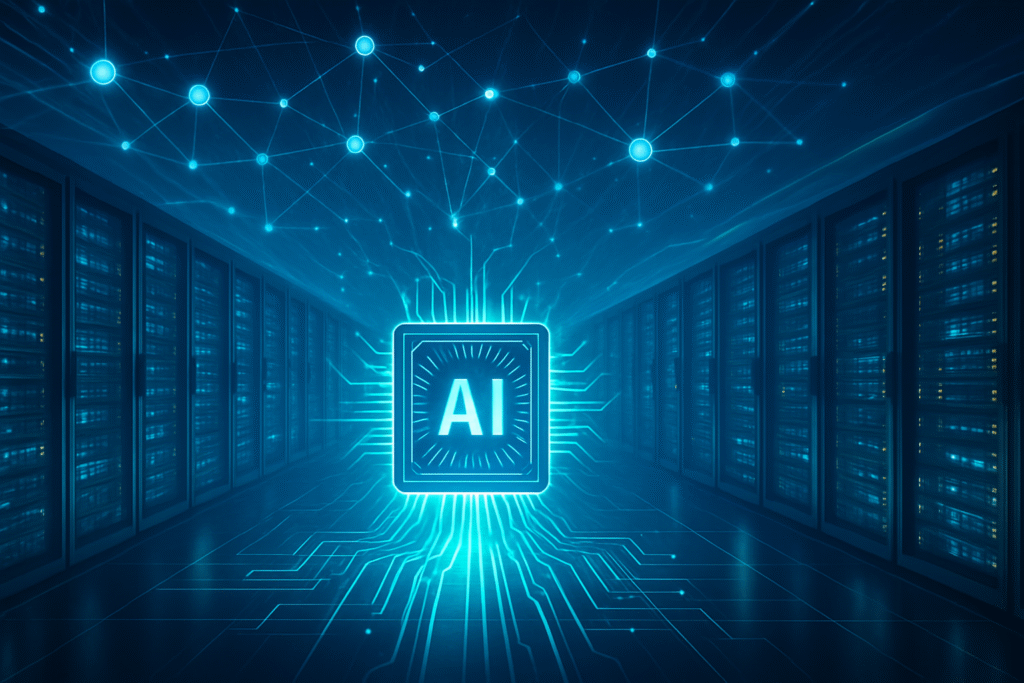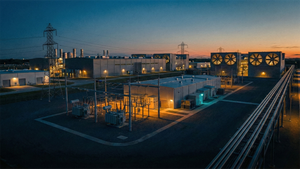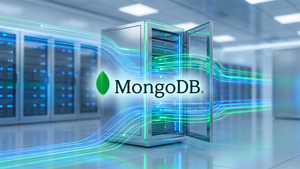
As of October 2025, NVIDIA (NASDAQ: NVDA) stands as the undisputed titan of the artificial intelligence (AI) chip landscape, wielding an unparalleled influence that underpins the global AI economy. With its groundbreaking Blackwell and upcoming Blackwell Ultra architectures, coupled with the formidable CUDA software ecosystem, the company not only maintains but accelerates its lead, setting the pace for innovation in an era defined by generative AI and high-performance computing. This dominance is not merely a commercial success; it represents a foundational pillar upon which the future of AI is being built, driving unprecedented technological advancements and reshaping industries worldwide.
NVIDIA's strategic prowess and relentless innovation have propelled its market capitalization to an astounding $4.55 trillion, making it the world's most valuable company. Its data center segment, the primary engine of this growth, continues to surge, reflecting the insatiable demand from cloud service providers (CSPs) like Amazon Web Services (AWS) (NASDAQ: AMZN), Microsoft Azure (NASDAQ: MSFT), Google Cloud (NASDAQ: GOOGL), and Oracle Cloud Infrastructure (NYSE: ORCL). This article delves into NVIDIA's strategies, product innovations, and how it continues to assert its leadership amidst intensifying competition and evolving geopolitical dynamics.
Engineering the Future: Blackwell, Blackwell Ultra, and the CUDA Imperative
NVIDIA's technological superiority is vividly demonstrated by its latest chip architectures. The Blackwell architecture, launched in March 2024 and progressively rolling out through 2025, is a marvel of engineering designed specifically for the generative AI era and trillion-parameter large language models (LLMs). Building on this foundation, the Blackwell Ultra GPU, anticipated in the second half of 2025, promises even greater performance and memory capabilities.
At the heart of Blackwell is a revolutionary dual-die design, merging two powerful processors into a single, cohesive unit connected by a high-speed 10 terabytes per second (TB/s) NVIDIA High-Bandwidth Interface (NV-HBI). This innovative approach allows the B200 GPU to feature an astonishing 208 billion transistors, more than 2.5 times that of its predecessor, the Hopper H100. Manufactured on TSMC's (NYSE: TSM) 4NP process, a proprietary node, a single Blackwell B200 GPU can achieve up to 20 petaFLOPS (PFLOPS) of AI performance in FP8 precision and introduces FP4 precision support, capable of 40 PFLOPS. The Grace Blackwell Superchip (GB200) combines two B200 GPUs with an NVIDIA Grace CPU, enabling rack-scale systems like the GB200 NVL72 to deliver up to 1.4 exaFLOPS of AI compute power. Blackwell GPUs also boast 192 GB of HBM3e memory, providing a massive 8 TB/s of memory bandwidth, and utilize fifth-generation NVLink, offering 1.8 TB/s of bidirectional bandwidth per GPU.
The Blackwell Ultra architecture further refines these capabilities. A single B300 GPU delivers 1.5 times faster FP4 performance than the original Blackwell (B200), reaching 30 PFLOPS of FP4 Tensor Core performance. It features an expanded 288 GB of HBM3e memory, a 50% increase over Blackwell, and enhanced connectivity through ConnectX-8 network cards and 1.6T networking. These advancements represent a fundamental architectural shift from the monolithic Hopper design, offering up to a 30x boost in AI performance for specific tasks like real-time LLM inference for trillion-parameter models.
NVIDIA's competitive edge is not solely hardware-driven. Its CUDA (Compute Unified Device Architecture) software ecosystem remains its most formidable "moat." With 98% of AI developers reportedly using CUDA, it creates substantial switching costs for customers. CUDA Toolkit 13.0 fully supports the Blackwell architecture, ensuring seamless integration and optimization for its next-generation Tensor Cores, Transformer Engine, and new mixed-precision modes like FP4. This extensive software stack, including specialized libraries like CUTLASS and integration into industry-specific platforms, ensures that NVIDIA's hardware is not just powerful but also exceptionally user-friendly for developers. While competitors like AMD (NASDAQ: AMD) with its Instinct MI300 series and Intel (NASDAQ: INTC) with Gaudi 3 offer compelling alternatives, often at lower price points or with specific strengths (e.g., AMD's FP64 performance, Intel's open Ethernet), NVIDIA generally maintains a lead in raw performance for demanding generative AI workloads and benefits from its deeply entrenched, mature software ecosystem.
Reshaping the AI Industry: Beneficiaries, Battles, and Business Models
NVIDIA's dominance, particularly with its Blackwell and Blackwell Ultra chips, profoundly shapes the AI industry. The company itself is the primary beneficiary, with its staggering market cap reflecting the "AI Supercycle." Cloud Service Providers (CSPs) like Amazon (AWS), Microsoft (Azure), and Google (Google Cloud) are also significant beneficiaries, as they integrate NVIDIA's powerful hardware into their offerings, enabling them to provide advanced AI services to a vast customer base. Manufacturing partners such as TSMC (NYSE: TSM) play a crucial role in producing these advanced chips, while AI software developers and infrastructure providers also thrive within the NVIDIA ecosystem.
However, this dominance also creates a complex landscape for other players. Major AI labs and tech giants, while heavily reliant on NVIDIA's GPUs for training and deploying large AI models, are simultaneously driven to develop their own custom AI chips (e.g., Google's TPUs, Amazon's Inferentia and Trainium, Microsoft's custom AI chips, Meta's (NASDAQ: META) in-house silicon). This vertical integration aims to reduce dependency, optimize for specific workloads, and manage the high costs associated with NVIDIA's chips. These tech giants are also exploring open-source initiatives like the UXL Foundation, spearheaded by Google, Intel, and Arm (NASDAQ: ARM), to create a hardware-agnostic software ecosystem, directly challenging CUDA's lock-in.
For AI startups, NVIDIA's dominance presents a double-edged sword. While the NVIDIA Inception program (over 16,000 startups strong) provides access to tools and resources, the high cost and intense demand for NVIDIA's latest hardware can be a significant barrier to entry and scaling. This can stifle innovation among smaller players, potentially centralizing advanced AI development among well-funded giants. The market could see disruption from increased adoption of specialized hardware or from software agnosticism if initiatives like UXL gain traction, potentially eroding NVIDIA's software moat. Geopolitical risks, particularly U.S. export controls to China, have already compelled Chinese tech firms to accelerate their self-sufficiency in AI chip development, creating a bifurcated market and impacting NVIDIA's global operations. NVIDIA's strategic advantages lie in its relentless technological leadership, the pervasive CUDA ecosystem, deep strategic partnerships, vertical integration across the AI stack, massive R&D investment, and significant influence over the supply chain.
Broader Implications: An AI-Driven World and Emerging Concerns
NVIDIA's foundational role in the AI chip landscape has profound wider significance, deeply embedding itself within the broader AI ecosystem and driving global technological trends. Its chips are the indispensable engine for an "AI Supercycle" projected to exceed $40 billion in 2025 and reach $295 billion by 2030, primarily fueled by generative AI. The Blackwell and Blackwell Ultra architectures, designed for the "Age of Reasoning" and "agentic AI," are enabling advanced systems that can reason, plan, and take independent actions, drastically reducing response times for complex queries. This is foundational for the continued progress of LLMs, autonomous vehicles, drug discovery, and climate modeling, making NVIDIA the "undisputed backbone of the AI revolution."
Economically, the impact is staggering, with AI projected to contribute over $15.7 trillion to global GDP by 2030. NVIDIA's soaring market capitalization reflects this "AI gold rush," driving significant capital expenditures in AI infrastructure across all sectors. Societally, NVIDIA's chips underpin technologies transforming daily life, from advanced robotics to breakthroughs in healthcare. However, this progress comes with significant challenges. The immense computational resources required for AI are causing a substantial increase in electricity consumption by data centers, raising concerns about energy demand and environmental sustainability.
The near-monopoly held by NVIDIA, especially in high-end AI accelerators, raises considerable concerns about competition and innovation. Industry experts and regulators are scrutinizing its market practices, arguing that its dominance and reliance on proprietary standards like CUDA stifle competition and create significant barriers for new entrants. Accessibility is another critical concern, as the high cost of NVIDIA's advanced chips may limit access to cutting-edge AI capabilities for smaller organizations and academia, potentially centralizing AI development among a few large tech giants. Geopolitical risks are also prominent, with U.S. export controls to China impacting NVIDIA's market access and fostering China's push for semiconductor self-sufficiency. The rapid ascent of NVIDIA's market valuation has also led to "bubble-level valuations" concerns among analysts.
Compared to previous AI milestones, NVIDIA's current dominance marks an unprecedented phase. The pivotal moment around 2012, when GPUs were discovered to be ideal for neural network computations, initiated the first wave of AI breakthroughs. Today, the transition from general-purpose CPUs to highly optimized architectures like Blackwell, alongside custom ASICs, represents a profound evolution in hardware design. NVIDIA's "one-year rhythm" for data center GPU releases signifies a relentless pace of innovation, creating a more formidable and pervasive control over the AI computing stack than seen in past technological shifts.
The Road Ahead: Rubin, Feynman, and an AI-Powered Horizon
Looking ahead, NVIDIA's product roadmap promises continued innovation at an accelerated pace. The Rubin architecture, named after astrophysicist Vera Rubin, is scheduled for mass production in late 2025 and is expected to be available for purchase in early 2026. This comprehensive overhaul will include new GPUs featuring eight stacks of HBM4 memory, projected to deliver 50 petaflops of performance in FP4. The Rubin platform will also introduce NVIDIA's first custom CPU, Vera, based on an in-house core called Olympus, designed to be twice as fast as the Grace Blackwell CPU, along with enhanced NVLink 6 switches and CX9 SuperNICs.
Further into the future, the Rubin Ultra, expected in 2027, will double Rubin's FP4 capabilities to 100 petaflops and potentially feature 12 HBM4 stacks, with each GPU loaded with 1 terabyte of HBM4E memory. Beyond that, the Feynman architecture, named after physicist Richard Feynman, is slated for release in 2028, promising new types of HBM and advanced manufacturing processes. These advancements will drive transformative applications across generative AI, large language models, data centers, scientific discovery, autonomous vehicles, robotics ("physical AI"), enterprise AI, and edge computing.
Despite its strong position, NVIDIA faces several challenges. Intense competition from AMD (NASDAQ: AMD) and Intel (NASDAQ: INTC), coupled with the rise of custom silicon from tech giants like Google (NASDAQ: GOOGL), Amazon (NASDAQ: AMZN), Microsoft (NASDAQ: MSFT), Apple (NASDAQ: AAPL), and Meta (NASDAQ: META), will continue to exert pressure. Geopolitical tensions and export restrictions, particularly concerning China, remain a significant hurdle, forcing NVIDIA to navigate complex regulatory landscapes. Supply chain constraints, especially for High Bandwidth Memory (HBM), and the soaring power consumption of AI infrastructure also demand continuous innovation in energy efficiency.
Experts predict an explosive and transformative future for the AI chip market, with projections reaching over $40 billion in 2025 and potentially swelling to $295 billion by 2030, driven primarily by generative AI. NVIDIA is widely expected to maintain its dominance in the near term, with its market share in AI infrastructure having risen to 94% as of Q2 2025. However, the long term may see increased diversification into custom ASICs and XPUs, potentially impacting NVIDIA's market share in specific niches. NVIDIA CEO Jensen Huang predicts that all companies will eventually operate "AI factories" dedicated to mathematics and digital intelligence, driving an entirely new industry.
Conclusion: NVIDIA's Enduring Legacy in the AI Epoch
NVIDIA's continued dominance in the AI chip landscape, particularly with its Blackwell and upcoming Rubin architectures, is a defining characteristic of the current AI epoch. Its relentless hardware innovation, coupled with the unparalleled strength of its CUDA software ecosystem, has created an indispensable foundation for the global AI revolution. This dominance accelerates breakthroughs in generative AI, high-performance computing, and autonomous systems, fundamentally reshaping industries and driving unprecedented economic growth.
However, this leading position also brings critical scrutiny regarding market concentration, accessibility, and geopolitical implications. The ongoing efforts by tech giants to develop custom silicon and open-source initiatives highlight a strategic imperative to diversify the AI hardware landscape. Despite these challenges, NVIDIA's aggressive product roadmap, deep strategic partnerships, and vast R&D investments position it to remain a central and indispensable player in the rapidly expanding AI industry for the foreseeable future. The coming weeks and months will be crucial in observing the rollout of Blackwell Ultra, the first details of the Rubin architecture, and how the competitive landscape continues to evolve as the world races to build the next generation of AI.
This content is intended for informational purposes only and represents analysis of current AI developments.
TokenRing AI delivers enterprise-grade solutions for multi-agent AI workflow orchestration, AI-powered development tools, and seamless remote collaboration platforms.
For more information, visit https://www.tokenring.ai/.




